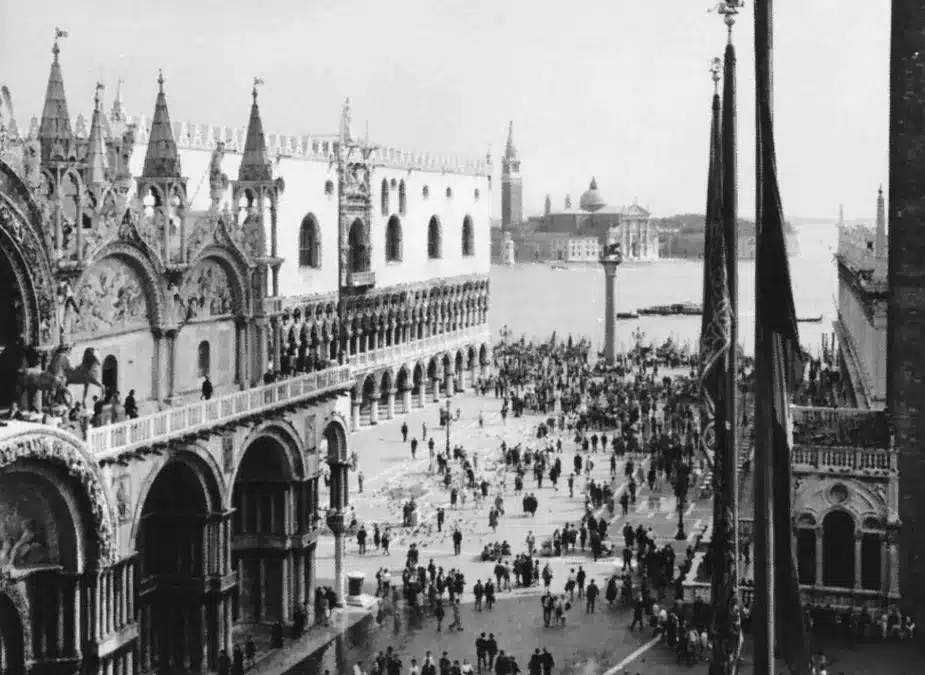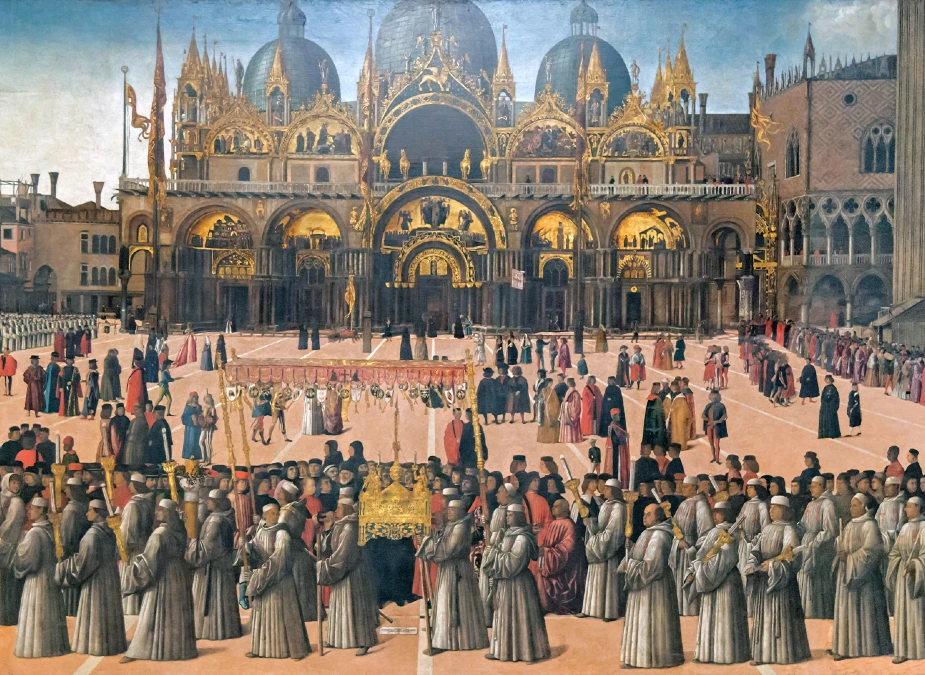The Doge’s Palace is a fascinating record of Venetian history. Also, its halls house treasures such as Tintoretto’s vibrant paintings and intricate sculptures, which tell stories of a bygone era.
What secrets did the Doge’s Palace hold before it was converted into a museum?
From its humble beginnings to its present splendor, the Palace has undergone numerous transformations and challenges, shaping its identity over the centuries.
This article will take you through the history of the Doge’s Palace, revealing its fascinating journey.
The Origins of Doge’s Palace

The Doge’s Palace dates back to the ninth century when it was built as a fortress to defend Venice from intruders.
For centuries, this powerful structure guarded the rise and fall of empires.
It was renovated and expanded several times by various Doges, becoming a symbol of Venetian power and wealth.
From Fortress to Palace
As Venice grew as a maritime power, the Doge’s Palace became the seat of political power.
It housed not only the Doge but also various government offices and chambers where important decisions influencing Venetian politics were made.
With the rise of powerful Doges such as Francesco Sforza and Andrea Gritti, the Palace was transformed from a symbol of brute force to a blank canvas for art.
Transformation into an Artistic Mine
Between the 16th and 18th centuries, renowned architects such as Jacopo Sansovino and Pietro Lombardo were commissioned to redesign the structure in the Renaissance style.
Renowned artists such as Titian, Tintoretto, and Veronese decorated the walls with stunning frescoes and paintings depicting historical scenes, mythological tales, and portraits of Doges.
These masterpieces enhanced the Palace’s beauty and served as powerful reminders of Venetian power and cultural riches.
From Palace to Museum
The Palace’s fate changed dramatically during the 18th century.
With the dissolution of the Venetian Republic in 1797, the Doge’s Palace was transformed from a symbol of political power to a public museum.
This transformation gave the public a firsthand view of Venice’s grandeur and artistic legacy.
Despite Napoleon’s plunder of some of its treasures in the late 18th century, the Palace still houses an exceptional collection of art and historical artifacts.
Hidden Stories of the Doge’s Palace

The Doge’s Palace’s ornate facades and grand halls conceal passageways and hidden nooks that recall a bygone era of secrecy and deception.
These secret passages, known only to a select few, allowed dignitaries and officials to move discreetly throughout the Palace, undetected by prying eyes.
These stories, which include secret passages and hidden chambers, add to the Palace’s mystique and allure.
Take the Secret Itineraries Tour to discover the mysteries hidden at the Palace. Book Now!
Doge’s Palace is more than Walls and Art
The Doge’s Palace has actively participated in the grand narrative of history, rather than simply witnessing it.
From the infamous Bridge of Sighs, rumored to be a passage for prisoners expressing their resignation, to daring escape attempts from its labyrinthine prisons, the Palace walls whisper tales of intrigue and fortitude.
As you walk through its halls, remember that you are not just walking through a museum but journeying through centuries of Venetian history, power, and artistic splendor.
Visitors prefer taking the full Palace guided tour to deeply understand the Palace’s history, art, artifacts and mysteries.
FAQs
1. What is historic about the Doge’s Palace?
Doge’s Palace, a symbol of Venetian power, is historically significant as the Doge’s residence, seat of government, and hub of political activity in the Venetian Republic.
It is a UNESCO World Heritage Site due to its architecture, artwork, and impact on Venetian history.
2. What is inside Doge’s Palace?
Visitors to Doge’s Palace will encounter several historically significant chambers, including the Doge’s apartments, the Venetian government’s administrative halls, the Grand Council Chamber, and the iconic Bridge of Sighs.
A collection of priceless works by well-known Venetian artists is also housed in the Palace.
3. Whose paintings are at the Doge’s Palace?
When Claude Monet visited Venice in 1908, he captured the façade of the Doge’s Palace from a gondola on the Grand Canal in a painting.
More artists who added to the Palace’s vast collection of paintings and artworks included Paolo Veronese, Jacopo Tintoretto, his son Domenico, and others.
4. What is the history of the Venetian doges?
The Venetian doges have a long history, dating back to the 7th and 8th centuries when they ruled the Venetian Republic.
The aristocracy elected them for life, and they represented both political and symbolic Venetian sovereignty.
The doges’ powers were limited by law, and their reigns were distinguished by elaborate ceremonies and rituals.
5. Who escaped from Doges Palace?
While many attempted to flee, Giacomo Casanova is the only known person who escaped the Doge’s Palace prisons in Venice.
Read more about the prisons in the Doge’s Palace.
Image: Wikipedia.org



